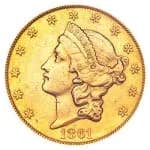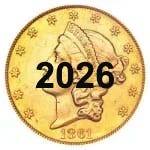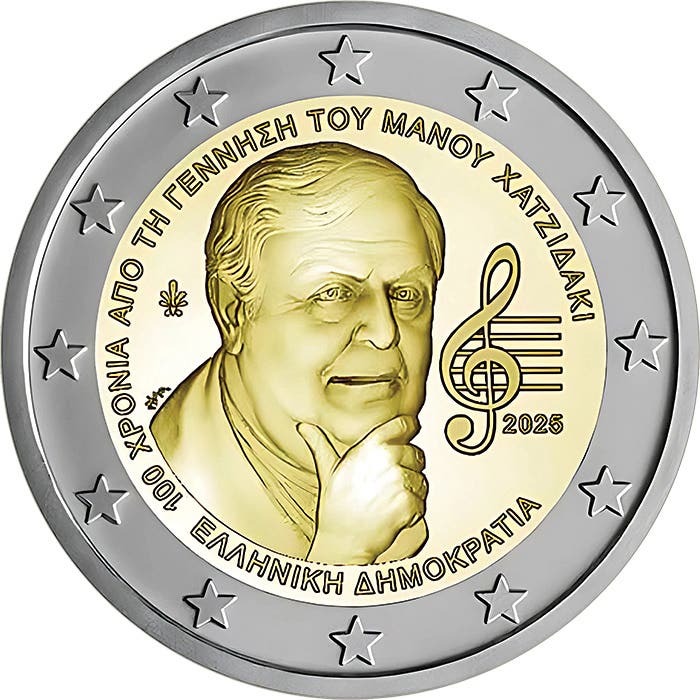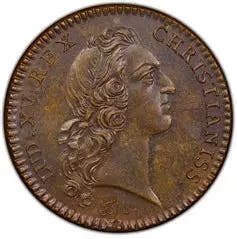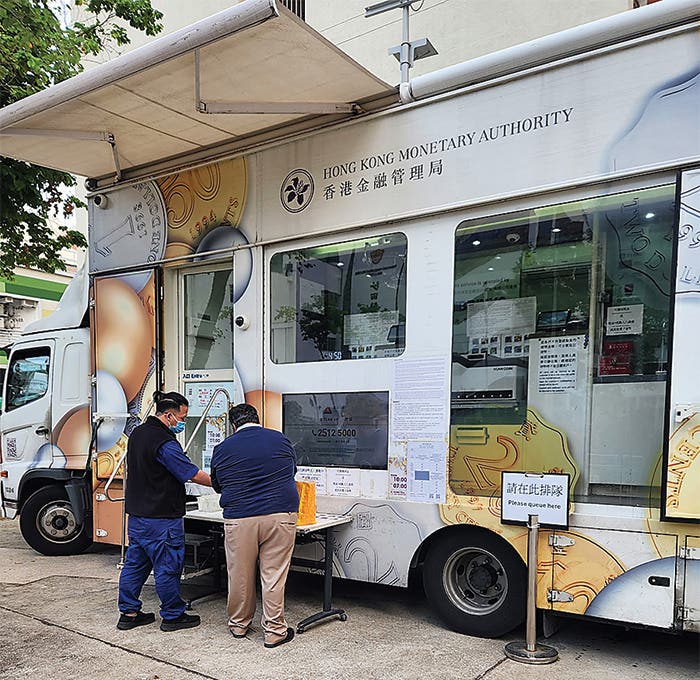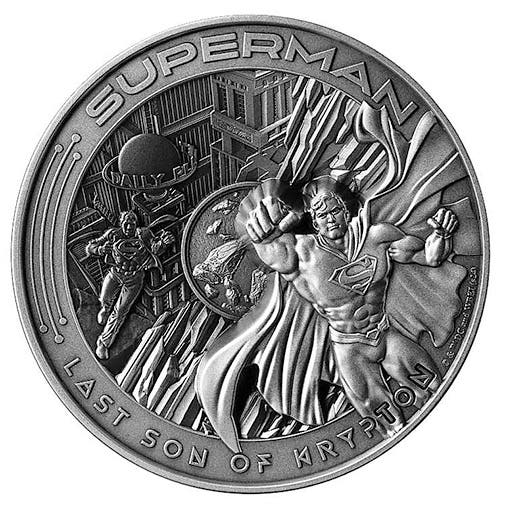Confusion surrounds 1798 shilling
One of Spink’s top-selling lots in their March sale was a so-called “Dorrien-Magens” shilling of 1798 (KM-607.3, S-3747, ESC-2139). In PCGS AU53, it commanded a price of $30,113 [£22,800] on…
One of Spink’s top-selling lots in their March sale was a so-called “Dorrien-Magens” shilling of 1798 (KM-607.3, S-3747, ESC-2139). In PCGS AU53, it commanded a price of $30,113 [£22,800] on an estimate of £12,000-15,000.
The coin is one of the great rarities of the British series. Less than twenty are known, with at least seven in institutional collections. Few collectors, or even dealers, will have seen one in the raw, let alone handled an example.
Questions still remain as to how many were produced, how many were destroyed and how many survive. The mint records concerning this issue are wanting in a number of respects. Over the past couple of centuries, some of the available information has been interpreted in different ways. This has led to several entrenched misunderstandings of what these coins were about.
In the early 1980s, a thorough analysis of mint records, contemporary media reports and government papers relevant to the 1798 shilling was undertaken by Graham Dyer, Senior Research Curator at The Royal Mint Museum, and Professor Peter Gaspar. Their detailed findings were published in the British Numismatic Journal of 1982 (vol. 52, pp. 198-214). That 36-year-old article appears to have been overlooked by a number of recent commentators and, particularly, auction catalogers. It is noteworthy insofar as some of its findings are at odds with Sir John Craig’s 1953 book The Mint. It is revisited here in summary.
Background
The 1798 shillings are historically important. Their production marks a watershed in British coinage.
This was a day and age when considerable turmoil wracked Britain. The country was at war with France – again. Napoleon was busy conquering all of mainland Europe. An abortive French invasion of Britain took place in Wales. Mutinies occurred in the Royal Navy. Troops killed protestors in Scotland. An attempt was made on the king’s life. And Prime Minister William Pitt was becoming increasingly authoritarian.
These matters aside, British life was not helped by the steady decline in the quantity and quality of Britain’s circulating coinage over many decades. This matter had an increasing impact on the country’s internal economy throughout the second half of the 18th century. The silver coinage in particular was in dire straits.
There was no shortage of silver bullion in Britain, but its price had reached a point where the intrinsic value of silver coins exceeded their face value. It was uneconomic to mint silver. Better quality coins, especially larger denominations such as crowns and halfcrowns, were hoarded, melted or exported. Only extremely worn, lightweight pieces circulated.
New shillings and sixpences were struck in 1787, but the bulk of these headed straight to the vaults of the Bank of England, which doled them out sparingly to customers wanting freshly minted coins.
By the 1790s, the coinage situation had become desperate. Emergency measures were taken. These included striking a gold third of a guinea and issuing countermarked foreign silver. Neither course of action had any effect on the troubled small change situation.
In 1798, the government finally got its act together. It ordered a complete review of the role of gold and silver in the nation’s coinage. This was to be undertaken by the Privy Council Committee on Coin chaired by Lord Liverpool, President of the Board of Trade and Chancellor of the Duchy of Lancaster. It would, however, take time to reach any conclusion.
Coining it
Despite the internal and external political turmoil, the late 1790s saw Britain experience a highly favorable balance of trade. This led to an influx of gold and silver and, in the late summer of 1797, the price of silver dipped below the critical coinage price of 62 shillings/oz.
This was a day and age when individuals might exercise a historic legal right to take bullion to the mint for coining. On March 30, 1798, a group of bankers saw the opportunity for a quick profit and notified the Mint that they intended to do just that.
Seven of those involved were banking firms, one a refinery, and two were individuals. One of those individuals was Magens Dorrien Magens, aptly described by Dyer & Gaspar as “the most vociferous of their number.”
On April 4, the first bars arrived at the Mint to be struck into shillings and sixpences. In due course, some 9,895 pounds was delivered. The largest depositors were the Barclays, Robarts and Barnett banks. The smallest was Magens, who intimated much more was on the way.
On April 14, melting of the ingots commenced, and on April 26 the first bars were supplied to the moneyers. Rolling commenced, dies were struck, and by the beginning of May, the bankers learned they could expect to receive their first coins by the middle of the month.
Meanwhile, the Committee on Coin was well aware of what was going on. They had profound reservations about the new coins. They saw them as premature. On May 8, the prime minister told the House of Commons a bill was to be introduced to stop the coining of all silver without a Royal Proclamation.
The first the Mint heard of this was May 9, and then only indirectly. The Mint Office learned of it from its moneyers on May 10 and put an immediate stop to both coining and the receiving of bullion. On May 12, the Mint’s Deputy Master informed the Master that although no formal order had been received to cease coining silver, he was aware of the verbal communication and had acted on this immediately. In the event, the new act was not assented to until late June.
In part, the committee’s concern had arisen from the possibility of the new silver coins being exchanged for gold coins and these being melted down and exported as bullion. This would cause a significant reduction in gold coinage.
Further, any rise in the price of silver could lead to a return to the original situation of undervalued silver coins, and the last thing the country needed was a series of coinage fluctuations.
The order to stop coining silver produced no great reaction. All the bankers wanted was the value of their silver back ASAP and at the coinage price of 62 shillings/oz. In the end, they were not paid until Aug. 24, and then in Exchequer Bills. The silver itself was delivered to the Bank of England in June 1799 both as uncoined bars and completed coins.
Magens Dorrien Magens
Considerable confusion still reigns over Magens Dorrien Magens. The last name occurs twice in the table of silver received by the Royal Mint in 1798 for coining.
At least one commentator has assumed it was the name of a firm, and it is possible the Mint itself thought this was the case. It is, however, the name of an individual who was a partner in a banking house in 1798 who had been a member of the House of Commons in 1796 and would be again from 1804 to 1812.
He was originally known as Magens Dorrien but in 1788 adopted the surname of Magens by special license. Despite what Wikipedia says, the bank in which he was a partner changed its name regularly throughout its history but was never Dorrien & Magens. As of 1798, it was Dorrien, Magens, Mello, Martin & Harrison. The firm was a constituent of the Royal Bank of Scotland. Magens’ dealings with the Royal Mint, however, may have been as a private individual with his firm never involved.
For no good reason, numismatists have attached a bastardized version of his name to the 1798 shilling. In the opinion of Dyer & Gaspar, they have done so incorrectly and unfairly. The attribution of the shillings to “Messrs. Dorrien and Magens,” i.e. two individuals, dates to at least 1841. It has continued in a confused vein ever since. The gentleman’s name is not hyphenated. It lacks the conjunction “and” as well as any ampersand.
Mintage
Numerous speculations have been made over the number of 1798 shillings produced. The Mint records are quite inconclusive but do show that come May 9, 3,250 pounds of silver had been melted, of which 1,080 pounds in bars were issued to the moneyers. Of this, 394 pounds were returned by the moneyers as scissel, i.e. scrap left over from blanking. Using this latter figure, Dyer & Gaspar calculate that 34,000 blanks had been produced equivalent to 550 pounds of silver.
Quite how many of these blanks were then coined is not known, but given that the Mint was intending to deliver completed coins to the bankers in a few days’ time, it is likely that striking was well under way before a stop was put on proceedings.
Regardless of the precise number, it is clear that all the shillings produced (along with any unused silver bars, scissel and other scrap) remained in the moneyers’ hands for about a year. It totaled over 682 pounds. When returned to the Mint Office in the summer of 1799, it weighed just over 677 pounds. This implies silver equivalent to 285 coins had gone AWOL.
Number surviving
In 1982, Dyer & Gaspar detailed 14 examples of the 1798 shilling they examined. Seven came from institutions and seven from private collections. Of these, one had been gifted to the Royal Mint by Lady Banks, wife of Sir Joseph Banks, a member of the Privy Council Committee on Coin. It had once been in the collection of Banks’ sister.
A second from the Ashmolean Museum traces its provenance back to Charles Hatchett, who inspected the metallurgical operations of the Royal Mint on behalf of the Privy Council Committee on Coin in 1798.
Two others in the Birmingham City Museum & Art Gallery came from under a foundation stone laid in 1805. They had been supplied by the Royal Mint. As Dyer & Gaspar point out, this means the Mint still had a supply of the 1798 striking as late as 1805.
In the 2015 edition of English Silver Coinage, as revised by Maurice Bull, the coin is given an R5 rarity with “< 20 known.”
Numerous other estimates exist, but most are speculative and lack authentication.
Dies
Dyer & Gaspar report a considerable number of tools were produced for the 1798 shilling consistent with an intended mintage of thousands of coins. Two new obverse matrices and three punches were made for the obverse and four for the reverse despite there being a substantial number of punches in stock from the 1787 minting.
From these, 11 obverse and 14 reverse dies were sunk. Of the existing 14 coins available to them, Dyer & Gaspar have identified three obverse and two reverse dies.
All the coins examined show fine concentric turning marks in relief, and it appears likely that some existing 1787 tools were modified to produce those of 1798. All these lines appear on the same place on all coins, and they must have been acquired from the same punch or even a single matrix.
Superficially, at least the 1798 shilling designs resemble those of the 1787 issue that possess a semée of hearts on the reverse Hanoverian shield (KM-607.2, S-3746, ESC-1225.) Differences exist. On the 1798 obverse, the three most obvious are the tip of the upper leaf of the laurel wreath extending into the field, an S-shaped hair curl immediately in front of the king’s ear, and the legend having but a single stop as opposed to three in 1787. Other less obvious variations include the styling of the king’s hair and its relation to the wreath, plus doubling around the king’s chin, nose and lips. Overall, the 1798 bust is less well defined than the 1787.
On the 1798 reverse, the horizontal and vertical lines of the central cross are better defined, and all extend fully to the surrounding shields; some doubling has occurred, as shown by an English lion with three front legs and a Hanoverian horse with three rear legs; the lettering of the legend is larger than used in 1787 and shows doubling in places.
A weakness on the top of the 1798 reverse crowns also occurs on some 1787 shillings.
The dies for the 1798 coin have been ascribed incorrectly to engraver John Milton. There is confusion here. Milton did produce a pattern shilling (or perhaps it was a guinea) dated 1798 (ESC-2176). But it was done privately after he had been dismissed from the Mint in 1797 for sinking dies to strike counterfeit Louis d’or and other foreign gold. The reverse of his pattern is distinct from that of the 1798 shilling struck by the Mint in having just a single shield like that of a spade guinea.
Linecar notes the Mint’s 1798 dies have also been attributed to Thomas Pingo. However, he died 12 years earlier, and Linecar suspects Lewis Pingo was responsible.
Coin type
Dyer & Gaspar’s original interest in the surviving 1798 shillings was to determine whether they were patterns, proofs or coins struck for circulation. In an earlier study, they had demonstrated that 18th century patterns and proofs were struck at the Royal Mint on a different type of press from that used for their circulating counterparts. This allows criteria to be defined that distinguish the differently struck coins.
In brief, the 14 examples of the 1798 shillings show criteria consistent with circulation coins: all follow the legal requirement for circulation shillings – unlike the 1787 proofs; fish-tailed bases on the lettering; no evidence of more than one hammer blow; grained edge overlaps at 180o; at least one die clash.
Hence, Dyer & Gaspar have no hesitation in stating unequivocally: “All the coins so far examined have proved to be normal currency pieces.” They are not proofs, nor are they patterns, despite being regularly described as such in auction catalogs.
Further, since all dies were destroyed on July 11, 1798, late strikings are precluded.
This article was originally printed in World Coin News. >> Subscribe today.
More Collecting Resources
• Get five centuries’ worth of identification and pricing in the brand-new Standard Catalog of Great Britain Coins eBook that will transform your coin collecting efforts.
• More than 600 issuing locations are represented in the Standard Catalog of World Coins, 1701-1800.

